Operations Boost Importance of Space Assets
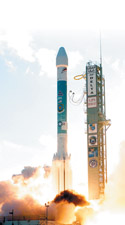 |
| A U.S. Air Force Delta II booster launches the newest global positioning system (GPS) satellite into orbit. With the military and the private sector placing greater reliance on satellites for daily operations, the Air Force Space Command is increasing its emphasis on protecting space-based assets. |
Protecting space-based assets is now the top priority for the U.S. Air Force Space Command, according to its commander. With the military’s reliance on network centricity well established, communications and situational awareness satellites have increased in significance to military operations—and to potential adversaries seeking to counter Western goals without confronting superior allied forces directly. And, the private sector is equally dependent on the many capabilities inherent in orbital platforms.
The
Ensuring space asset protection has become more essential as space systems have increased in importance in everyday military and commercial operations. “It is the national policy of the
“There is as great a threat to our space assets from terrorism as there is to any part of our critical infrastructure,” Gen. Kehler says. “In fact, space is a part of this nation’s critical infrastructure.
“We shouldn’t just look at the military applications of space,” the general continues. “Space is an enormously important factor in our economy—in fact, it’s enormously important in the global economy. I think that anywhere terrorists might decide that they could attack us in order to make the point they’re trying to make, we need to be vigilant about [it].”
Space system vulnerabilities vary. Ironically, many legacy systems may be more secure than their more modern counterparts. Some satellites designed during the Cold War already possess a degree of protection against potential threats, Gen. Kehler points out. These legacy systems can operate in a hostile or contested environment, but others were not designed with that kind of operation in mind.
Gen. Kehler emphasizes that the command must examine space asset vulnerabilities and address them where possible. Vulnerabilities that cannot be addressed in a complementary fashion, such as from the air, must be dealt with through protective measures.
Many of these vulnerability issues affect links with satellites, he continues. A host of adversaries, both state and non-state, want to jam global positioning system (GPS) signals. Other elements are vulnerable as well. The general notes a proliferation of jamming, as well as threats to ground segments. Protection of ground assets has been improved to counter increased threats.
“We think we’ve closed our vulnerabilities in a lot of those places,” he says. “Physical security has improved at our ground sites, just as it has at our bases in general and across the country where we have critical infrastructure.”
A key element of space protection involves another SPACECOM priority, which is space situational awareness. The command is increasing its capabilities for surveilling near-earth space. Part of situational awareness involves understanding the context in which hardware appears, Gen. Kehler offers. The command must work hard across the board to improve space situational awareness, he declares.
Several efforts already are underway. For the past three years, the command’s commercial and foreign entities pilot program has provided licensed users with space surveillance data through a Web site. SPACECOM is looking at providing more advanced services to a wider range of users.
The command is creating a space situational awareness program that will entail modernizing its space catalog and upgrading its command and control (C2). SPACECOM is replacing its 17-year-old space defense operations computer with a network-centric, services-oriented architecture for improved space situational awareness for combatant commanders. The Integrated Space Situational Awareness (ISSA) program aims to serve both SPACECOM and the U.S. Strategic Command (STRATCOM). It is designed to provide both commands with integrated knowledge—both current and predictive—of space events, threats, activities and conditions. These would include space system status and capabilities.
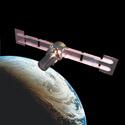 |
| Many experimental capabilities aboard the TacSat-2 satellite aim to pave the way for future small satellites that would provide significant strategic capabilities. Some of TacSat-2’s capabilities already are serving operational needs. |
The general adds that one such improvement involves the functional intelligence work that is performed on the ground. It has little to do with hardware, but it is an improvement in ground activities that benefits space situational awareness. It is his intent to focus attention equally on ground and space assets, he imparts. This and other efforts will improve space situational awareness.
“It’s going to be some new ground-based sensors; it’s going to be some space-based sensors that we have in the budget; and it’s going to be the other pieces of foundational activities to go along with that that give us space situational awareness,” he emphasizes.
However, many spaceborne situational awareness programs—as with a number of military satellite programs—have been plagued by delays and cost overruns. To achieve its missions, SPACECOM is counting on several new orbital platforms and systems that have not had smooth going on the program front.
SPACECOM’s only space-based space surveillance system, the midcourse experiment satellite (MSX), is an aging advanced concept technology demonstration launched in the late 1990s. It is to be replaced by the space-based space surveillance (SBSS) block 10 satellite early next year. A Government Accountability Office (GAO) report last year noted that a 2006 program restructure increased funding and schedule margin while relaxing requirements. The cost of the block 10 SBSS increased by $130 million more than initial estimates, according to the GAO report.
The block 10 satellite is slated to be followed by a constellation of satellites known as block 20. This constellation would provide surveillance beyond low earth orbit of even smaller objects and in shorter time lines than achieved by the block 10 orbiter. An Air Force advisory group recently suggested that a potential alternative to SBSS block 20 would be to launch multiple small satellites to augment the block 10 orbiter.
Another vital system that has suffered program problems is the space-based infrared satellite effort, known as SBIRS (SIGNAL Magazine, March 2004). Gen. Kehler states that SBIRS represents a critically important capability for the
However, SBIRS has had program problems for many years. The GAO report noted that the SBIRS High program deferred some capabilities and put off a decision on procuring the third and fourth satellites in the series, which would not meet SBIRS High requirements for coverage.
The GAO report continues that SBIRS still faces considerable risks. It has diverged from cost and schedule models established in a rebaselining. Unit costs have increased more than 315 percent to bring the total program costs to more than $10 billion since inception, and the launch schedule has slipped six years to where the earliest launch would be late this year.
Most recently, the program has been plagued by software problems associated with computer architecture issues. Gen. Kehler notes that engineers are working on the problem, and he hopes that a clear understanding of the trouble will lead to a determination of how much it will cost to fix it.
“We’re going to work our way through the SBIRS issue deliberately—I think it would be imprudent of us to not be deliberate about this—so that we can get to where we can make some decisions,” he says.
A key element of space situational awareness is the Rapid Attack Identification and Reporting System, or RAIDRS, which is designed to allow SPACECOM and STRATCOM to integrate with ISSA and space C2 to detect and report space attacks. The RAIDRS block 20 program builds on the original RAIDRS effort that aimed at identifying sources of interference with
One of the biggest challenges facing space C2 is to integrate it with Air Force C2 and joint C2 systems, SPACECOM officials note. At the heart of SPACECOM’s C2 upgrade is a new suite of enhanced tools that will synchronize space and air effects. One effort would enable the joint functional component commander for space to respond to space support requests from regional combatant commanders.
SPACECOM is working with multiple program offices and systems, including ISSA, RAIDRS and Falconer Air and
The command continues to pursue programs related to the Operationally Responsive Space concept (SIGNAL Magazine, July 2006). SPACECOM is looking at future space systems that could augment current surveillance, reconnaissance and communication platforms rapidly in response to combatant commander needs; that rapidly could replace space assets suddenly destroyed or disabled; and that rapidly could deploy systems supporting space situational awareness.
Gen. Kehler emphasizes that this concept is more about the capabilities it would produce—operationally responsive communications and operationally responsive intelligence, surveillance and reconnaissance, for example. Small satellites would provide vital capabilities to theater commanders and their warfighters.
Among the programs already supporting this effort is TacSat, which is helping build understanding of the dimensions of what the concept could be, the general offers. The TacSat-2 satellite launched barely a year ago features an array of experimental systems, including an advanced commercial imager, varied sensors and a signals intelligence payload.
The general predicts that in the not-too-distant future, the
Web Resources
Commercial and Foreign Entities Pilot Program: www.space-track.org
GAO Report on Space Acquisitions: www.gao.gov/cgi-bin/getrpt?GAO-07-730T
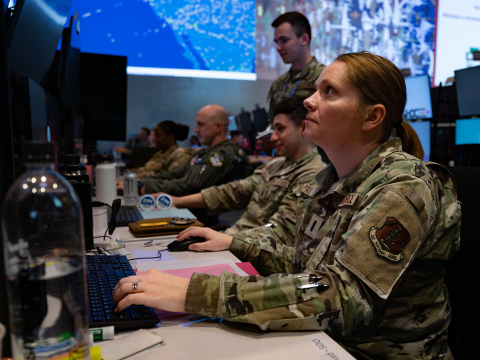
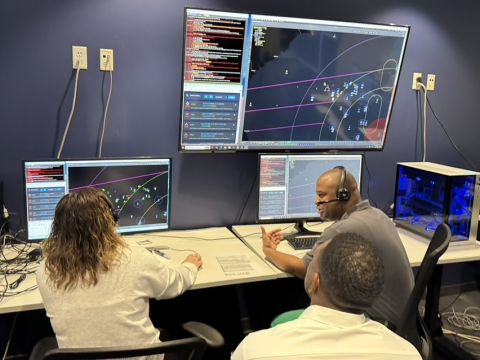

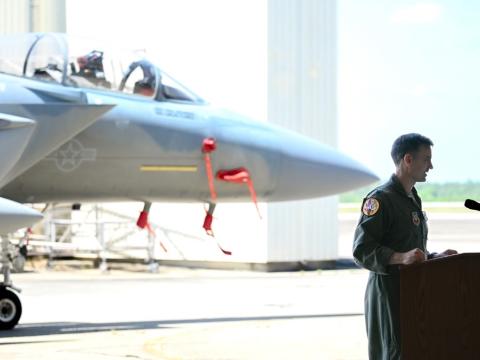
Comments